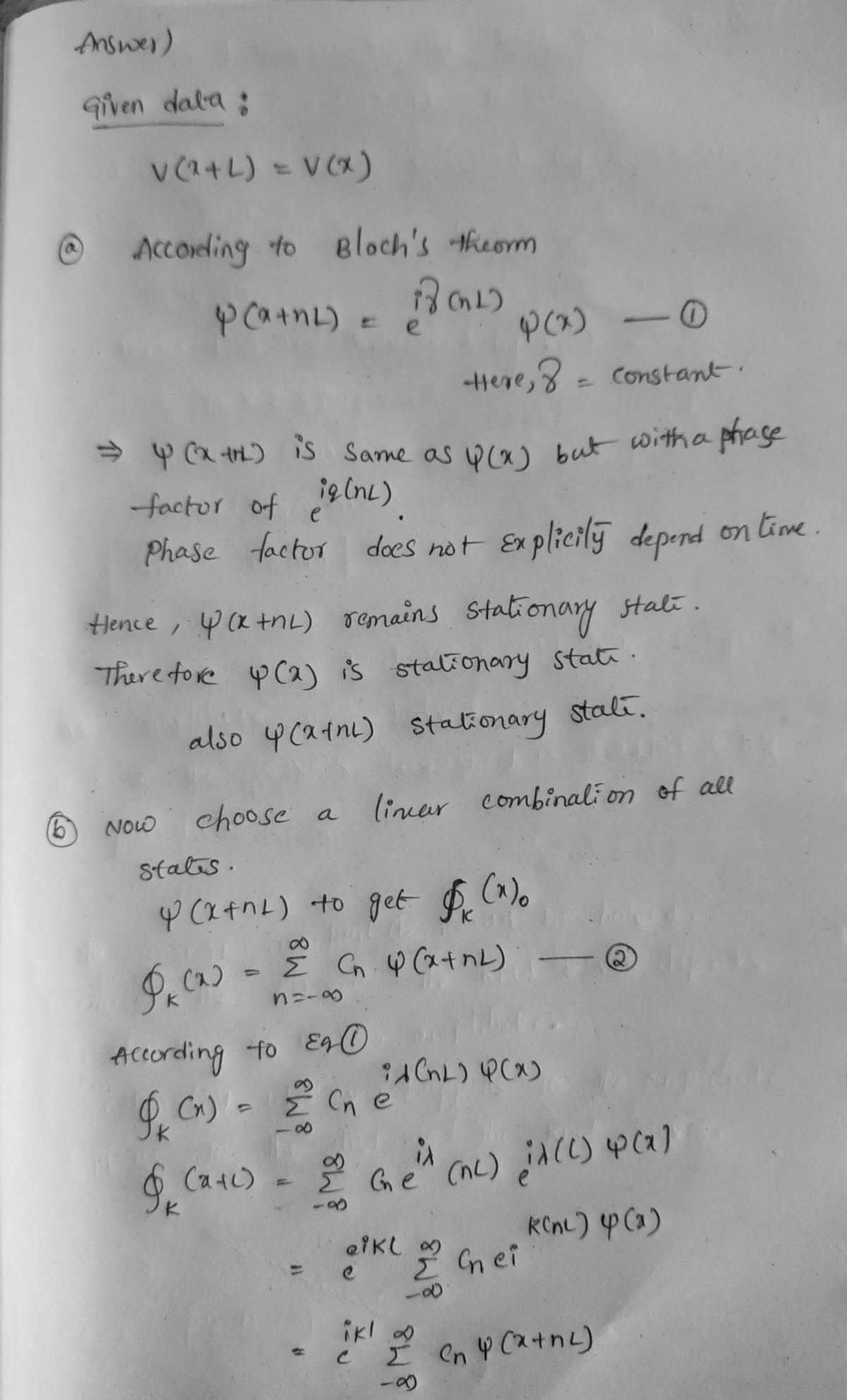(a) Show that if ý(r) is a stationary state, then (x +nL) is also a stationary state with the same energy, for any integer n. (b) Given any stationary state (x), construct a set of stationary states or(x) with the same energy, with the property that on(x + L) = ekLÓk(x). Check that you can recover v from the ørs. (Hint: use a linear combination ór(1) = E-- Cn»(x + nL) with appropriately chosen coefficients cn.) %3D %3D (c) Define ug(x) = e-ik=Óµ(x) and show that u is periodic, i.e. uz(x + L) = uµ(x). Hence we may choose an energy eigenbasis in which the stationary states are ør(r) = eikzuk(x). This is known as Bloch's theorem.
(a) Show that if ý(r) is a stationary state, then (x +nL) is also a stationary state with the same energy, for any integer n. (b) Given any stationary state (x), construct a set of stationary states or(x) with the same energy, with the property that on(x + L) = ekLÓk(x). Check that you can recover v from the ørs. (Hint: use a linear combination ór(1) = E-- Cn»(x + nL) with appropriately chosen coefficients cn.) %3D %3D (c) Define ug(x) = e-ik=Óµ(x) and show that u is periodic, i.e. uz(x + L) = uµ(x). Hence we may choose an energy eigenbasis in which the stationary states are ør(r) = eikzuk(x). This is known as Bloch's theorem.
Related questions
Question

Transcribed Image Text:5. Periodic potentials (see B&J§4.8)
Suppose we have a potential which is periodic with period L, i.e. V(x+ L) = V (x)
(a) Show that if v(x) is a stationary state, then »(x + nL) is also a stationary state
with the same energy, for any integer n.
(b) Given any stationary state (x), construct a set of stationary states or(x) with the
same energy, with the property that or(r + L) = etklók(x). Check that you can
recover ý from the øµs.
(Hint: use a linear combination ó«(x) = E-- Gn(x+nL) with appropriately
chosen coefficients cn.)
%3D
-00
(c) Define ux(x) = e-ik# óµ(x) and show that ug is periodic, i.e. uz(x + L) = ux(x).
Hence we may choose an energy eigenbasis in which the stationary states are ør(x) =
eikzuk(x). This is known as Bloch's theorem.
Expert Solution
Step 1

Trending now
This is a popular solution!
Step by step
Solved in 2 steps with 2 images
